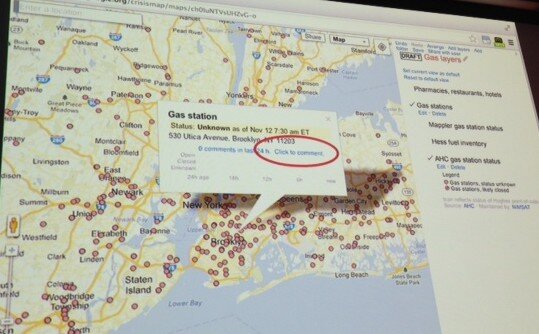3 Development Principles for Web Tools from Google's Crises Response Team
Alice Bonhomme-Biais, Software Engineer on the Google Crisis Response team, spoke at the Women Techmakers Summit in New York City today. The Google Crises Response team was created to respond to the needs of people after a disaster. They started by studying if people did use the internet for information after a disaster and found that Google was one of the first places people looked for information. Users were looking for primarily three types of information: how the disaster might affect them, if their friends are safe, and what they need to do next. Alice shared three principles that guide the team when creating tools for disaster response.
Simple
People in a disaster don't have time to sign-up for accounts or enter CAPTCHAs. The Google Crises Response team aims to create tools that are as simple and fast to use as possible. "Simple interfaces are the most difficult to build," reminds Alice. For example, Google developed Person Finder with only the two buttons below This tool was developed during a 72-hour hackathon after the Haiti earthquake. It was deployed within one hour of the Japanese earthquake in 2011. Immediately after the earthquake many victims went to tsunami shelters. To help families find each other people in the shelters hand wrote their names and posted them on the walls near the shelter entrance. Then some people took pictures of the postings on the walls and uploaded them to Picasa. Volunteers around the world, who spoke Japanese, translated the postings from the pictures and entered them into Google's Person Finder.
This tool was developed during a 72-hour hackathon after the Haiti earthquake. It was deployed within one hour of the Japanese earthquake in 2011. Immediately after the earthquake many victims went to tsunami shelters. To help families find each other people in the shelters hand wrote their names and posted them on the walls near the shelter entrance. Then some people took pictures of the postings on the walls and uploaded them to Picasa. Volunteers around the world, who spoke Japanese, translated the postings from the pictures and entered them into Google's Person Finder.
Standard
Collecting information from multiple sources is the core of Google's crises response tools. Using standard languages and APIs allows Google to include information from many sources and share that information.One example of the benefits of "standards" was after Hurricane Sandy. There were gas shortages and multiple organizations were working to get information to the public. The state had published a list of open businesses by longitude/latitude in a PDF (not useful to the average person). Google published that data onto their maps to be human readable. Of course, the information was quickly outdated, so the team added a feature to allow visitors to comment on the status of different businesses. Finally, they found a team of students who had been calling gas stations and posting their status. Google was able to quickly add their data to maps because the students had used a standard language.
Open
Google's team tries to open-source their tools whenever possible. It allows other developers to contribute and the tools to spread. They also open up about their best practices to other organizations creating technology solutions for crises.
Your Turn
If you're interested in contributing to technology solutions for emergencies, Alice shared a few organizations you can join.